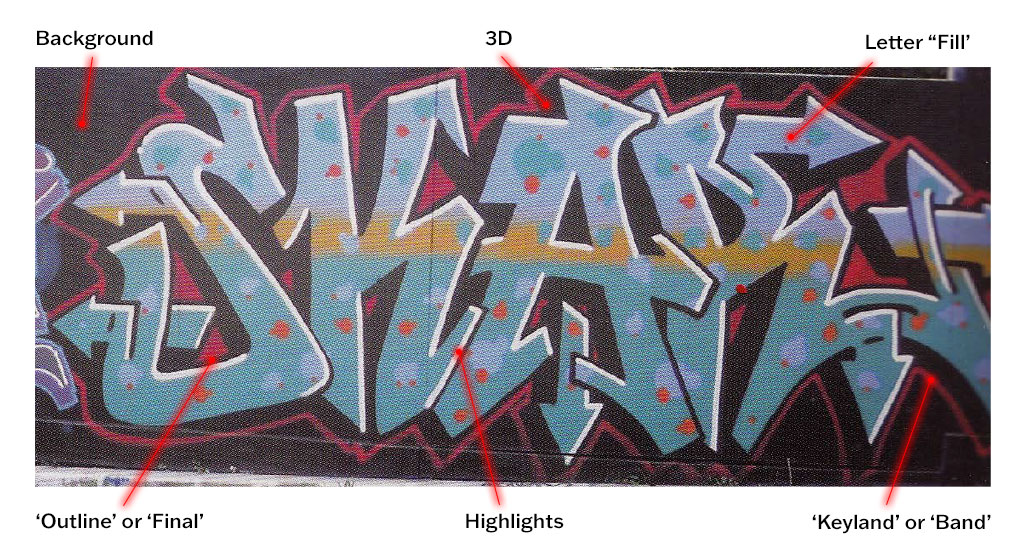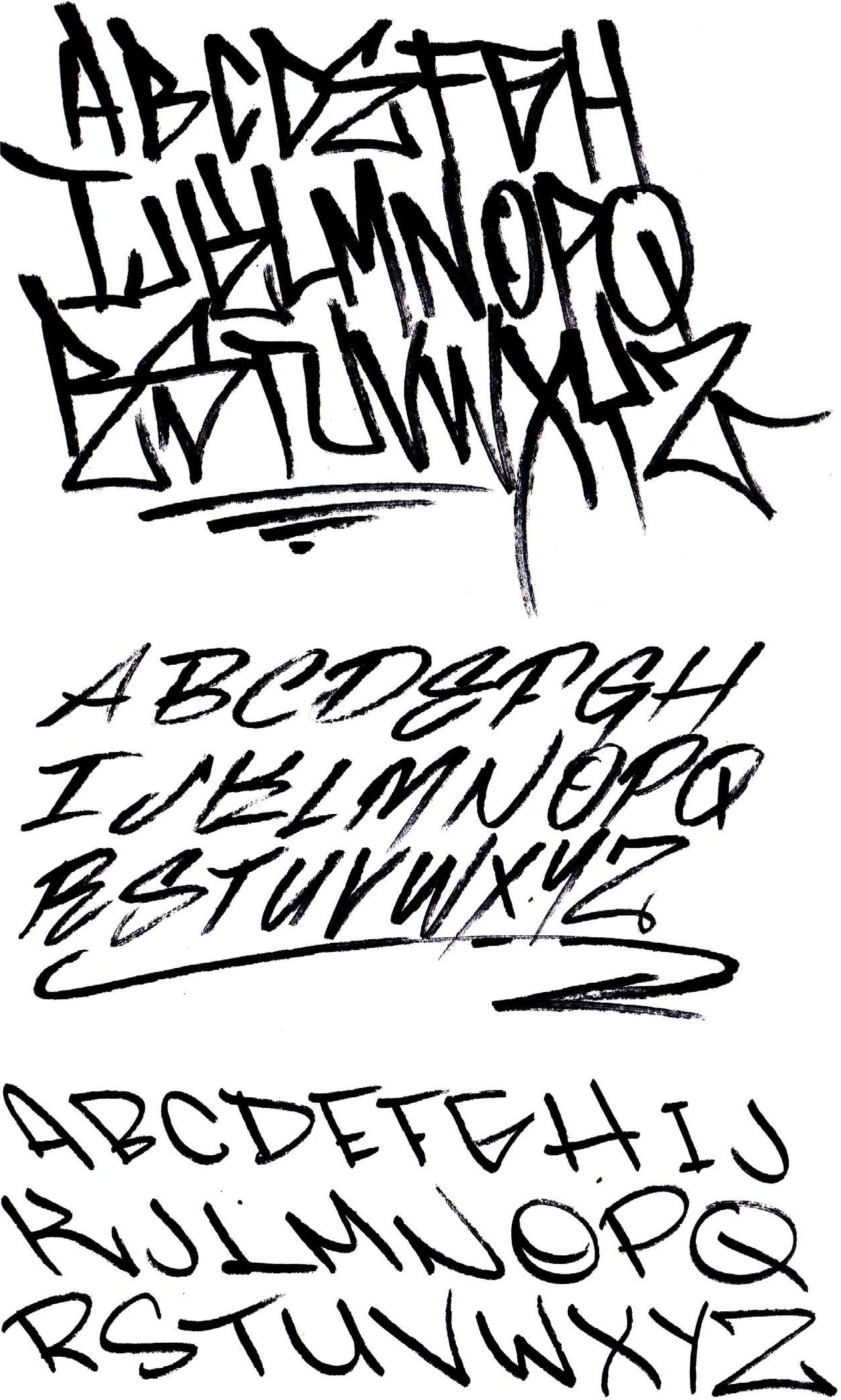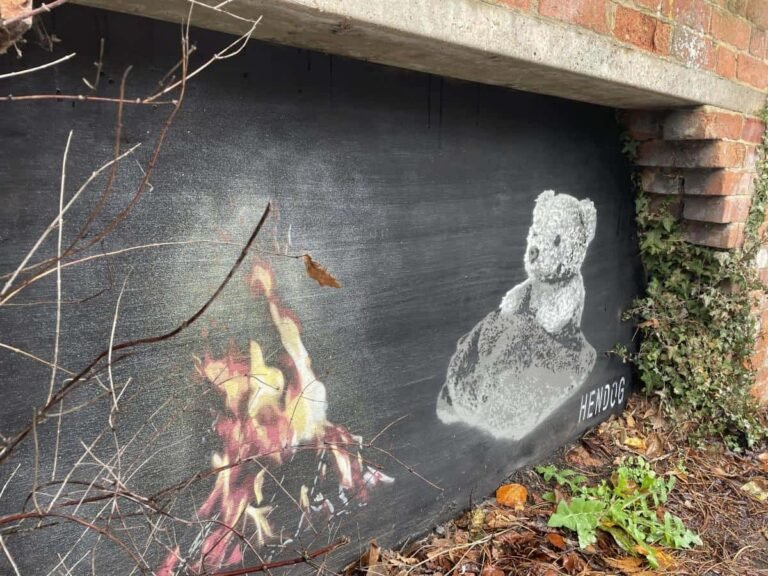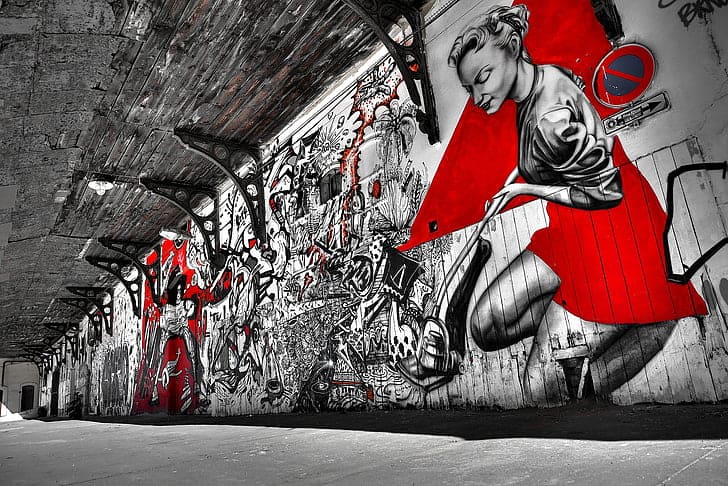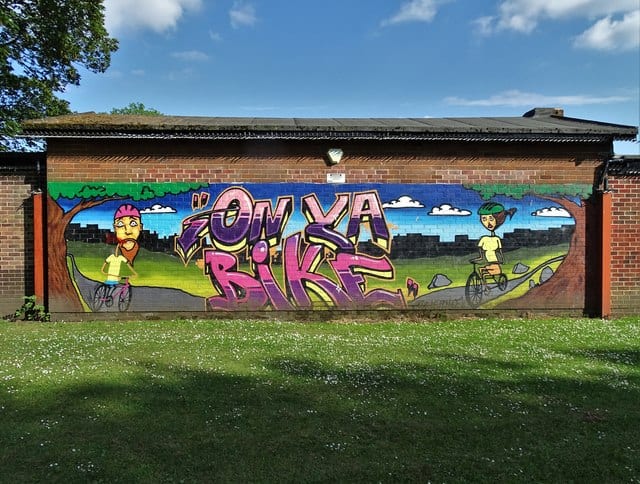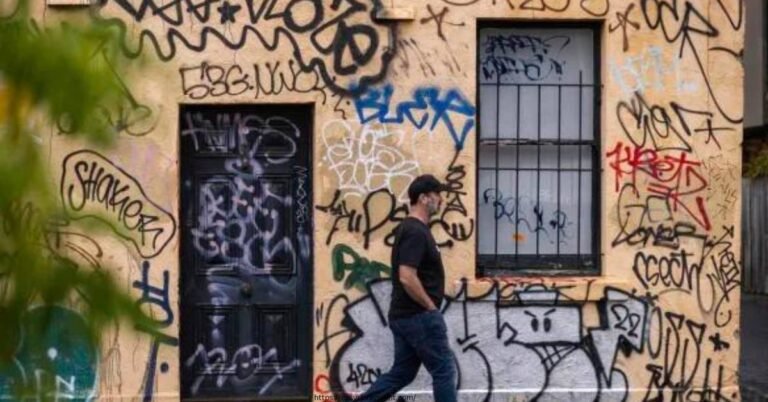How Do You Learn Graffiti Art & What Are Graffiti Letters?
Graffiti art has been a form of expression for many artists around the world for decades. It’s a form of street art that’s become more mainstream over the years, appearing in galleries, museums, and on social media platforms. Graffiti art is a unique and creative way to express oneself and can be a lot of fun to learn.
If you’re interested in learning graffiti art, this comprehensive guide will help you get started. We’ll cover everything from the basics of graffiti art to the tools and materials you’ll need to improve your skills. So, let’s dive in and explore the world of graffiti art!
See More: Who Is The First Graffiti Artist & History?
How Do You Learn Graffiti Art? Tips and Techniques
Getting started with graffiti art can be intimidating, but with the right tools and techniques, anyone can learn this art form. Here are some tips and techniques to get you started:
Know About: Graffiti Infographic.
Know Also: What Are The 8 Types Of Graffiti?
Study Graffiti Art
The first step to learning graffiti art is to study the work of other graffiti artists. Look for examples of graffiti art in your community, online, or in books. Study the style, techniques, and colors used by other artists. Take note of the different letter styles, the way lines are drawn, and how colors are blended.
Practice Sketching
Once you’ve studied different styles of graffiti art, start practicing by sketching different letters and designs. Use a pencil and paper to create sketches of different graffiti art styles. Practice drawing different letter styles, using different line thicknesses, and experimenting with different colors.
Experiment with Different Materials
Graffiti art can be created using different materials such as spray paint, markers, and paint pens. Experiment with different materials to find the ones that work best for you. Try different brands and colors to find your favorite. Don’t be afraid to mix and match different materials to create unique effects.
Learn the Basics of Graffiti Lettering
One of the most important aspects of graffiti art is lettering. To create effective graffiti art, it’s essential to learn the basics of lettering. Start by learning the structure of different letters, such as the curve of the “S” or the angle of the “A”. Practice creating different letter styles until you feel comfortable with them.
Practice Your Can Control
If you’re using spray paint to create graffiti art, it’s important to practice your can control. Can control refers to the way you hold and use the spray can to create lines and shapes. Practice using different pressures, angles, and distances to create different effects with your spray paint.
Experiment with Color
Color is an essential aspect of graffiti art. Experiment with different color combinations and effects to create unique graffiti art. Try using contrasting colors or blending colors to create a gradient effect. Don’t be afraid to experiment and have fun with color.
Materials Needed for Graffiti Art
To get started with graffiti art, you’ll need some basic materials. Here’s a list of materials you’ll need:
- Sketchbook or paper.
- Pencils or markers.
- Paint pens or markers.
- Spray paint.
- Masking tape or stencils (optional).
- Gloves (optional).
How to Do Graffiti Letters A-Z?
As a graffiti artist, mastering the art of graffiti letters A-Z is essential to your craft. Graffiti is a form of street art that involves painting, drawing, or scratching letters, symbols, or images on public surfaces. It is a popular form of artistic expression that has been around for decades and has evolved into a unique art form that can be seen in cities around the world.
In this comprehensive guide, we will explore how to do graffiti letters A-Z and provide you with the skills and techniques you need to become a master graffiti artist.
Understanding the Basics of Graffiti Letters
Before we dive into the techniques of how to do graffiti letters A-Z, it’s important to understand the basics of graffiti lettering. Graffiti letters are a unique style of lettering that is often characterized by their bold, thick lines and elaborate designs. The letters are usually distorted and stylized, making them difficult to read but visually striking.
To start, it’s essential to master the basic graffiti letter shapes. These shapes include the straight letter, bubble letter, wildstyle letter, and block letter. Once you have mastered the basics, you can start experimenting with different styles and techniques to create your own unique graffiti letters.
Materials Needed for Graffiti Lettering
To create graffiti letters A-Z, you will need specific materials. The most important materials you will need are spray paint, markers, and pencils. When choosing your spray paint, it’s essential to choose a high-quality brand that will provide you with the best coverage and color quality.
Markers and pencils are also important tools to have when doing graffiti lettering. Markers are great for outlining and adding details to your graffiti letters, while pencils are useful for sketching out your designs before you start painting.
Techniques for Doing Graffiti Letters A-Z
Now that you understand the basics of graffiti lettering and have the necessary materials, let’s dive into some techniques for doing graffiti letters A-Z.
- Sketch Your Design: Before you start painting, it’s important to sketch out your design. This will help you get a feel for the lettering and ensure that your design is proportionate and balanced. Use a pencil to sketch your design lightly on the surface you plan to paint.
- Add Dimension: To make your graffiti letters stand out, it’s important to add dimension. You can do this by adding shadows and highlights to your letters. This will make them look more realistic and three-dimensional.
- Experiment with Color: Graffiti is all about bold colors and contrasts. Don’t be afraid to experiment with different color combinations and gradients. This will help your graffiti letters stand out and make them more visually appealing.
- Use Different Techniques: There are many different techniques you can use when doing graffiti lettering. For example, you can use a stencil to create uniform letters or use a paintbrush to add texture and depth to your letters. Experiment with different techniques to find the ones that work best for you.
- Practice: Like any art form, practice makes perfect. Keep practicing your graffiti lettering and experimenting with different techniques to improve your skills.
Handstyle – Graffiti Tag Alphabet Ideas
Graffiti is an art form that has been around for decades, and one of the most recognizable aspects of graffiti is the tag. A tag is a stylized signature that a graffiti artist uses to mark their territory and leave their mark on the urban landscape.
One of the key components of a tag is the hardstyle – the way in which the letters are written. Here are some ideas for a graffiti tag alphabet with a unique handstyle:
- Bubble letters: Bubble letters are a classic handstyle for graffiti tags. They are round, bold, and easily recognizable from a distance.
- Sharp angles: Another popular handstyle is sharp angles. This style features crisp edges and a more aggressive feel, perfect for making a bold statement.
- Flowing curves: For a more elegant handstyle, consider using flowing curves in your tag alphabet. This style is great for creating a sense of movement and energy.
- Block letters: Block letters are a straightforward and simple handstyle that is easy to read from a distance. They can also be customized with a variety of textures and effects.
- Calligraphy: Calligraphy is an intricate and decorative handstyle that can add a touch of sophistication to your tag alphabet. It requires a bit more skill and practice, but the results are impressive.
- Wildstyle: For the more adventurous graffiti artist, wildstyle is a complex and intricate handstyle that incorporates arrows, curves, and other design elements into the letters themselves.
- Digital: With the increasing popularity of digital art, some graffiti artists are creating their tags using digital tools like tablets and stylus pens. This allows for even more customization and precision in the handstyle.
FAQs
Q. Is graffiti art legal?
A. Graffiti art can be illegal if it’s done without permission on public or private property. However, there are legal ways to create graffiti art, such as through community art programs or by obtaining permission from property owners.
Q. Do I need to have artistic talent to learn graffiti art?
A. While having artistic talent can be helpful, anyone can learn graffiti art with practice and dedication. It’s all about learning the techniques and putting in the effort to improve your skills.
Q. How do I find a place to practice graffiti art?
A. Graffiti art is often done on public property, but it’s important to respect the laws and regulations in your area. Look for community art programs or events that allow graffiti art. You can also practice on your own property or in a private space with permission.
Q. Can I learn graffiti art online?
A. Yes, there are many online resources for learning graffiti art. You can find tutorials, videos, and online courses that can help you improve your skills. However, it’s important to also practice in person to get hands-on experience.
Q. How long does it take to get good at graffiti?
A. Becoming skilled in graffiti art requires a significant amount of dedication, practice, and patience. It is impossible to estimate an exact timeframe for how long it will take to become “good” at graffiti, as everyone’s learning process is unique and depends on various factors such as natural talent, experience, and dedication.
Q. Where am I allowed to do graffiti?
A. It is important to note that graffiti is illegal in most public spaces, and painting without permission can result in fines, arrest, and damage to public property. However, some cities and communities have designated areas where graffiti is allowed and even encouraged. These areas are typically called “graffiti walls” or “legal walls.”
Before painting, it is crucial to research local laws and regulations regarding graffiti and obtain permission from the property owner or a designated authority. Some cities have specific programs or organizations that allow artists to paint public murals legally. These programs often require artists to submit a proposal and obtain approval before painting.
Conclusion
Learning graffiti art can be a fun and rewarding experience for anyone interested in this art form. With the right tools, techniques, and practice, anyone can learn to create unique and expressive graffiti art.
Remember to study different styles, practice sketching, experiment with different materials and colors, and learn the basics of lettering and can control. And always respect the laws and regulations in your area when practicing graffiti art. So, go out there and express yourself through graffiti art!
References:
- Graffiti Diplomacy (https://www.graffitidiplomacy.com/) – This website offers free graffiti lessons and resources for beginners. It covers basic graffiti techniques, lettering styles, and color theory.
- Bombing Science (https://www.bombingscience.com/) – This website is a graffiti community and online store that sells graffiti supplies. It also offers tutorials, interviews with graffiti artists, and a forum where you can connect with other graffiti enthusiasts.
- Graffwriter (https://graffwriter.com/) – This website is a virtual graffiti simulator where you can practice your skills and experiment with different styles and colors. It’s a great way to practice without the risk of getting in trouble for illegal graffiti.
- Learn How to Graffiti (https://www.learnhowtograffiti.com/) – This website offers a range of tutorials and resources for beginner to advanced graffiti artists. It covers everything from sketching to painting on walls.
- Graffiti Kings (https://graffitikings.co.uk/) – This website is a UK-based graffiti crew that offers workshops, events, and commissioned graffiti art. They also have a blog that covers graffiti news and showcases their work.
Ruth Aquilani is a renowned graffiti artist known for her bold, colorful, and expressive style. She began her career as a street artist in the early 2000s, quickly making a name for herself in the graffiti community with her unique and striking works of art.
